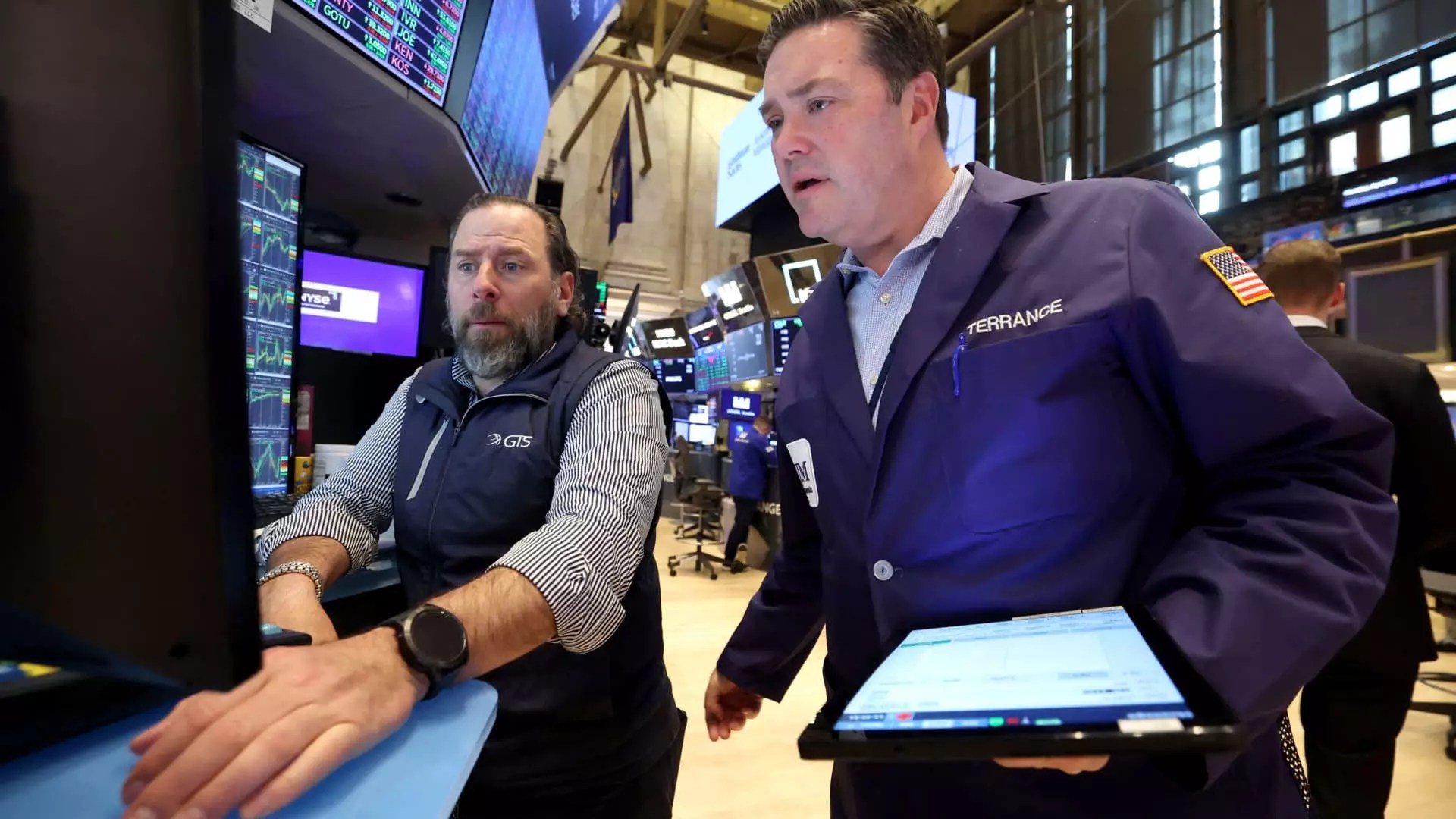In the ever-volatile sphere of finance, the decisions made by key players—most notably the Federal Reserve—tend to send ripples throughout the economy. With the recent recovery of the S&P 500 and Nasdaq Composite since early April, investors are gearing up for another round of analysis as they await the Fed’s verdict on interest rates. The stakes are high, and the implications of this decision stretch far beyond the trading floor. Yet, as we approach this pivotal moment, it’s crucial to critically assess the underlying indicators that could sway the market unpredictably.
The Fed and Its Pronouncements: What Lies Ahead?
Wall Street is undoubtedly on high alert as it quickly assesses the likelihood of the Fed maintaining the current interest rate range of 4.25%-4.5%. There’s a 95% probability suggested by the CME Group’s FedWatch tool, but history has taught us that certainty in markets is a fleeting illusion. Amidst pervasive tariff-related uncertainties and mixed economic indicators, an astute analysis of Federal Chairman Jerome Powell’s post-announcement commentary could trigger significant market movements.
Craig Johnson, chief market technician at Piper Sandler, has drawn attention to a potential resistance level at 5,800 for the S&P 500. His assertion—that even neutral commentary might catalyze a market dip—highlights a key aspect of our current financial climate: fragility. A pullback to levels around 5,400-5,500, especially in response to vague guidance from the Fed, suggests that even minor shifts in sentiment can lead to substantial market corrections.
The Defensive Stance of Wall Street Strategists
As the market maintains this precarious position, some strategists are advocating a more cautious approach. Steve Sosnick from Interactive Brokers famously pointed out the challenges of acting on incomplete data, particularly concerning the looming 90-day tariff moratorium. His concerns reflect a wider unease about potential supply chain disruptions and ongoing price hikes. The business landscape is still clouded in uncertainty, and it raises pertinent questions: How should investors position themselves amidst such turbulence?
While uncertainty typically breeds fear, it also presents opportunities. Keith Lerner, co-chief investment officer at Truist, suggests an emphasis on sectors such as utilities, financials, and communication services. These sectors, traditionally seen as defensive, may provide stability regardless of economic fluctuations. It’s important to recognize that even in times of adversity, certain stocks possess underlying demand that helps them weather the storm.
The Emerging AI Market: A Double-Edged Sword
Turning to technology, particularly Artificial Intelligence, presents an intriguing dynamic. Adam Patti, CEO of VistaShares, emphasizes the resilience of AI-focused stocks as a sheltered investment in stormy weather. Yet, while the AI market remains buoyed by robust fundamentals, the potential for volatility still looms large. The steep upturn can easily transform into a swift downturn, particularly if sentiment shifts drastically in response to the Fed’s pronouncements.
As Paula Sandler’s Johnson rightly points out, while major tech companies have remained attractive, their performance may not follow the same trajectory as smaller software firms or other sub-sectors. This divergence emphasizes a crucial reality: not all tech investments are created equal. Investors must do their due diligence to identify which segments are poised for growth amidst overall economic uncertainty.
Exploring Short-Term Bonds: A Sleepy Haven?
Malcolm Ethridge from Capital Area Group draws attention to the often-overlooked potential of short-term bonds. During high-interest rate periods, locking in favorable yields is key. Ethridge’s viewpoint is particularly relevant given the current yield on the 2-year Treasury note, which trades around 3.797%. This perspective invites a compelling question: should conservative investors look to bonds as a refuge in these turbulent times, or are equities still the winning ticket?
This underscores the importance of a diversified portfolio, especially when external factors, such as tariffs and Fed meetings, can upset the apple cart at any moment. The debate rages on whether it’s wise to hedge bets with bonds at the expense of potential long-term growth in the equity markets.
The financial landscape is shifting, and as we await the Fed’s decision, all eyes are glazed over market indicators, understanding that the future is rarely predictable yet undeniably impactful. The question remains—how should investors navigate these predicaments with an eye to preserving their capital while still seeking opportunities for growth? It’s time for a thoughtful approach to remain poised for the sudden shifts that characterize today’s economic realities.


Leave a Reply